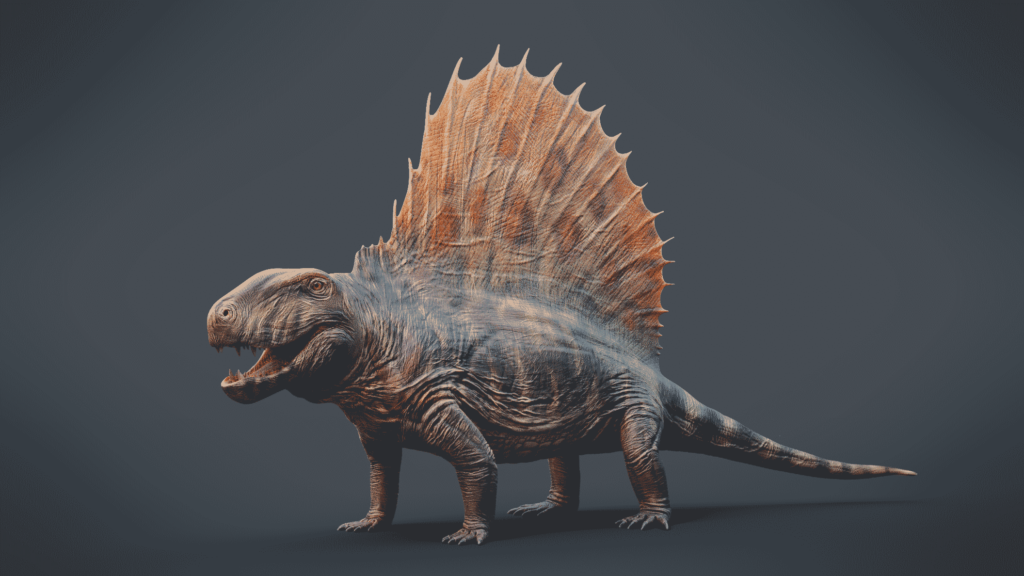The Sail-Backed Predator of the Permian Period
Meet Dimetrodon, a fascinating creature from the Permian period, around 295 to 272 million years ago!

| Meaning | Two measures of teeth [Di-metr-odon] |
| Pronunciation | dy-MET-ruh-don |
| When: | Permian (295–272 million years ago) |
| Where: | North America (primarily in Texas and Oklahoma, but fossils have been found across other parts of the continent) |
| What: | Synapsid (specifically a member of the family Sphenacodontidae) |
| Weight: | Approximately 250–300 kg (550–660 pounds) |
| Length: | About 3–4.6 meters (10–15 feet) |
| Diet: | Carnivorous (likely preyed upon fish, amphibians, and possibly small reptiles) |
| Discovered: | First described by Edward Drinker Cope in 1878. |
Despite its reptilian appearance, Dimetrodon is not a dinosaur but rather an early relative of mammals called a synapsid.
It is known for its distinctive sail-like structure on its back, formed by elongated spines connected by skin.
This sail likely helped Dimetrodon regulate its body temperature or may have been used for display purposes. Dimetrodon was a carnivore, using its sharp teeth to prey on fish and other small animals.
Imagine this ancient predator prowling the swampy landscapes of its time, with its sail towering above as it hunts for food.
Dimetrodon was a key player in the early evolution of terrestrial ecosystems, showcasing the diversity and adaptability of life during the Permian period!
